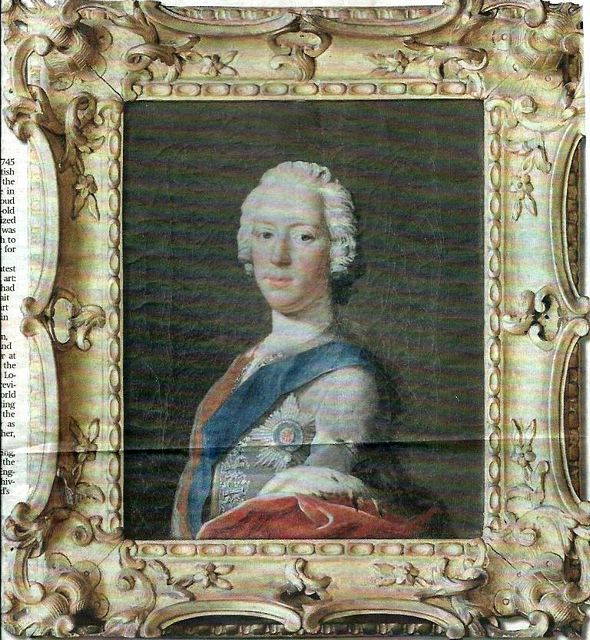Allan Ramsay's portrait of the Prince in 1745 found at Gosford House - that's magnificent news!
Prince's portrait painted in 1745 by Allan Ramsay is just a few miles away from the site of his famous Victory. It's at Gosford House
The long lost portrait of Bonnie Prince Charlie has been discovered in Scotland, ending one of the greatest mysteries in British royal art. The portrait, by Scottish artist Allan Ramsay, was painted in Edinburgh in 1745 the year Charles launched his ill-fated invasion of England - and of his famous Victory at Prestonpans!
It is the only portrait of Charles to have been painted whilst he was in Britain.
It was first seen publicly on BBC2's Culture Show Special, The Lost Portrait of Bonnie Prince Charlie, February 22nd 2014 ... presented by the art historian Dr Bendor Grosvenor. The programme includes an interview in Perth's Salutation Inn with the 1745 Battle Trust's historian Arran Johnston who proudly displayed the Trust's own Princely painting by Kate Hunter.
The BBC 2 website reported:
Almost unseen for 250 years
Charles Edward Stuart, popularly known as Bonnie Prince Charlie, was the grandson of the exiled Stuart king, James II. In 1745, at the age of 24, he landed in Scotland, determined to regain the throne. However, despite taking his Highland army as far south as Derby, Charles' rebellion ended in defeat at the Battle of Culloden in 1746.
Until now, it was thought that no portrait of Charles was ever painted from life in Britain. However, the newly discovered portrait was painted in Holyrood Palace in late October 1745.
For over 250 years it has remained, almost entirely unseen, in the collection of the Earls of Wemyss at Gosford House, just outside Edinburgh.

The portrait shows, for the first time, Charles's likeness during one of the most dramatic episodes in British history, when he became the last man to lead a Scottish army into England.
Dr Grosvenor's discovery of the portrait makes amends for his shock revelation a few years ago that the Scottish National Portrait Gallery's iconic portrait of Charles, a pastel painted in Paris in 1747 by the French artist Maurice Quentin de La Tour, was not in fact Charles, but his brother Henry. The La Tour portrait had adorned book covers and shortbread tins across the world.
Dr Grosvenor's discovery therefore brings an end to the search for a suitable replacement portrait of Charles at the height of his fame.
The clues followed by Grosvenor to find the portrait
The first clue in Grosvenor's search for the portrait was the discovery, at Holyrood, of a letter summoning Ramsay to paint Charles's portrait at the Palace in October 1745.
Then, an old black and white photograph of a painting of Charles which bore the hallmarks of Ramsay's work, was found in the National Portrait Gallery archive in London.
Finally, further records at Gosford House revealed the painting had long been identified as a Ramsay.
And that attribution has now been confirmed by Dr Duncan Thomson, the former Director of the Scottish National Portrait Gallery and an expert on Ramsay's work.
Dr Grosvenor said: "Bonnie Prince Charlie is one of my heroes, and I always felt bad about debunking what used to be his most famous portrait.
"So I'm delighted to have found the best possible replacement - a portrait painted from life [after Victory in Prestonpans] and on the eve of his invasion of England."
Dr Duncan Thomson said: "This portrait brings the Prince back to life in a way I'd never thought imaginable. It's hard to overstate the importance of finding a portrait of the Prince painted in Scotland, by a Scottish artist."
Published Date: February 23rd 2014
|





